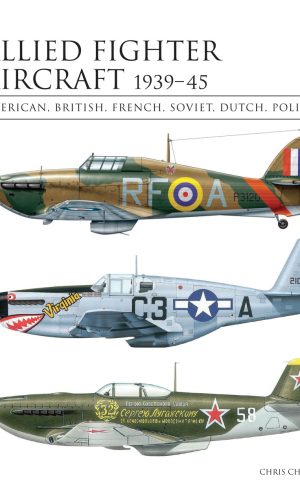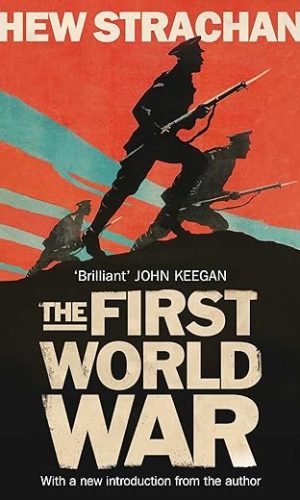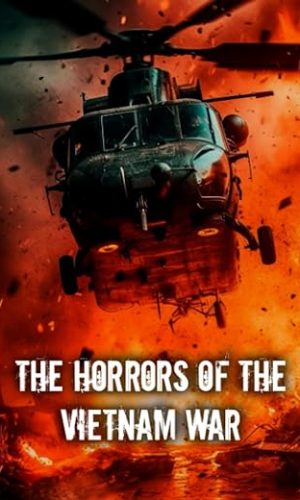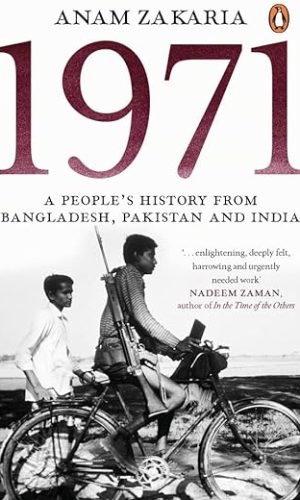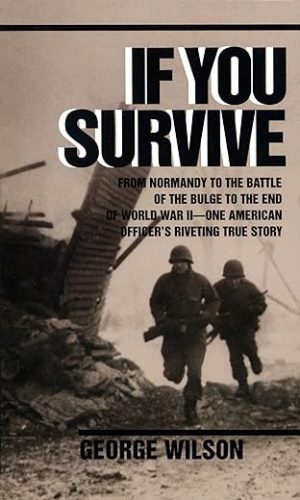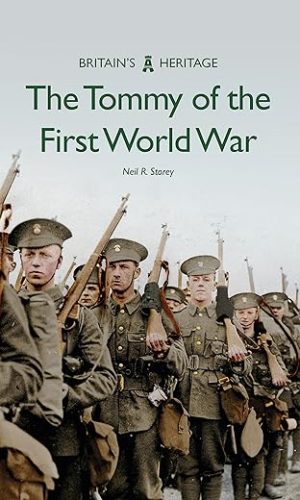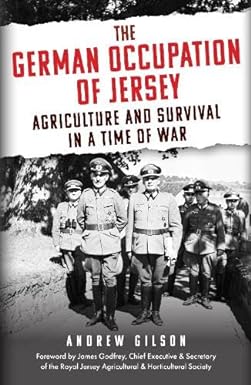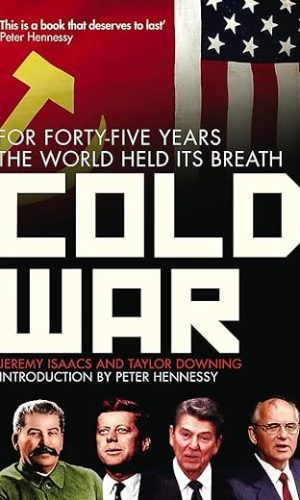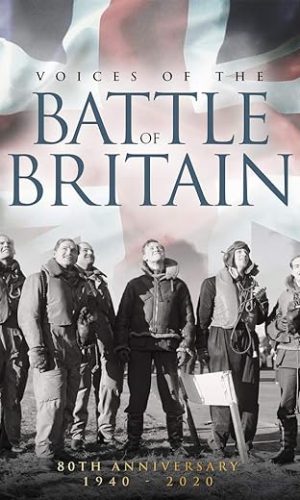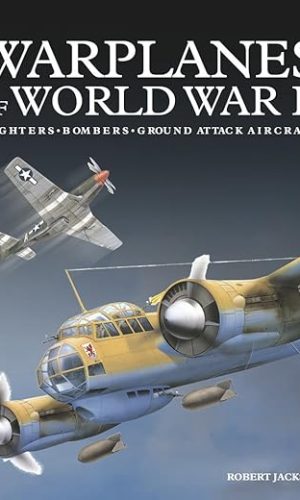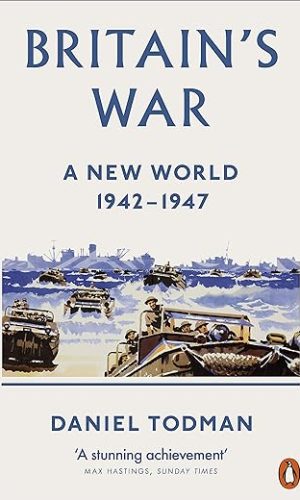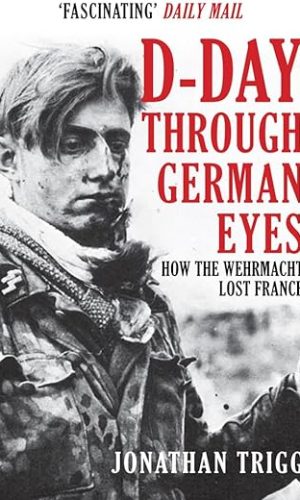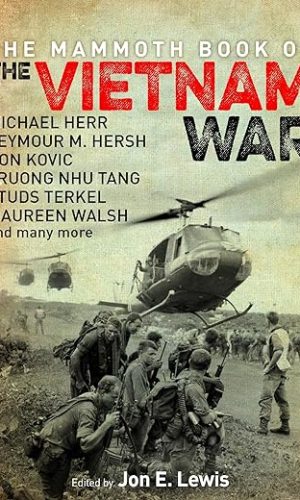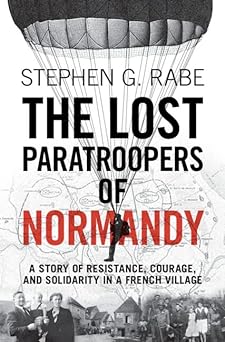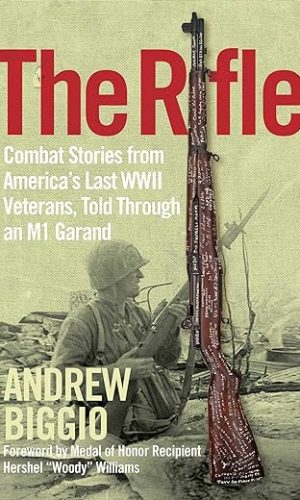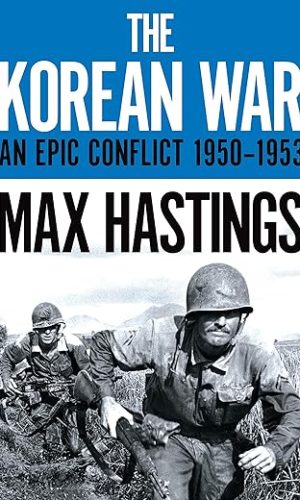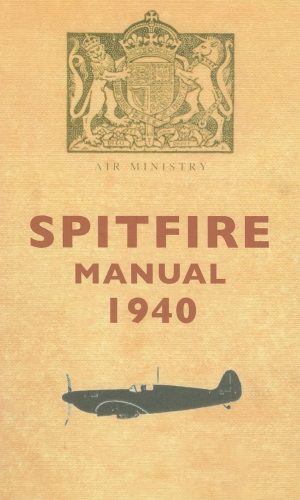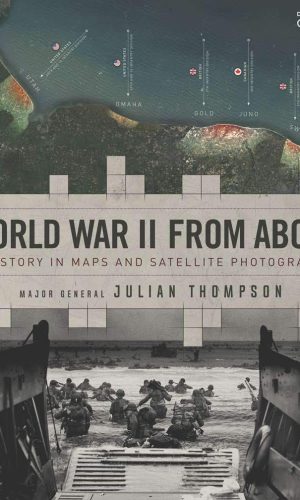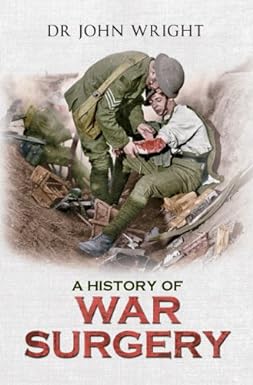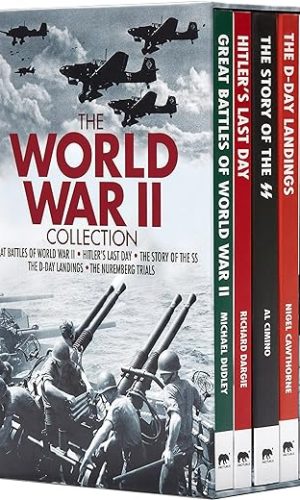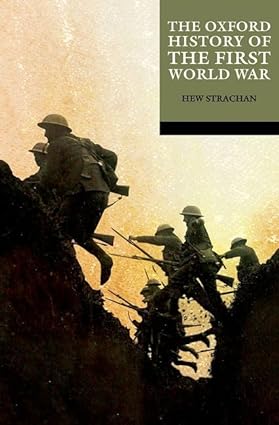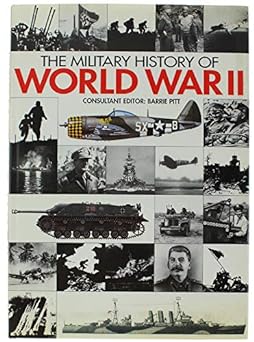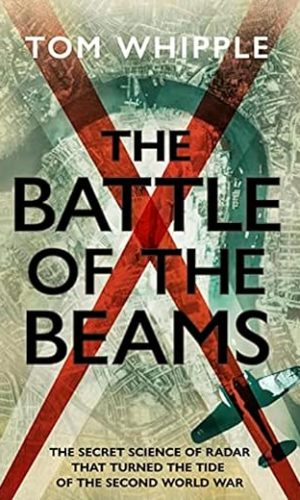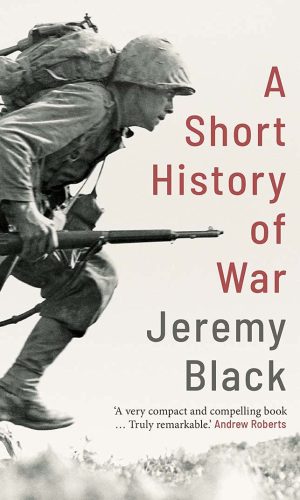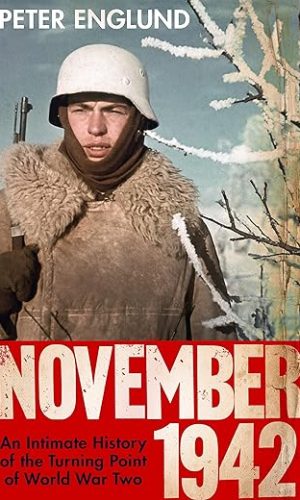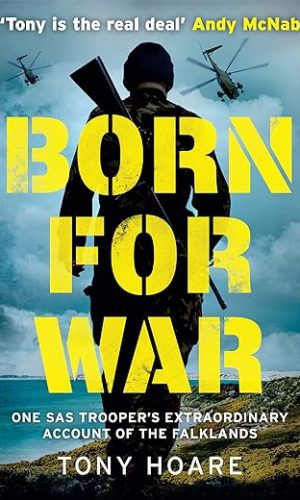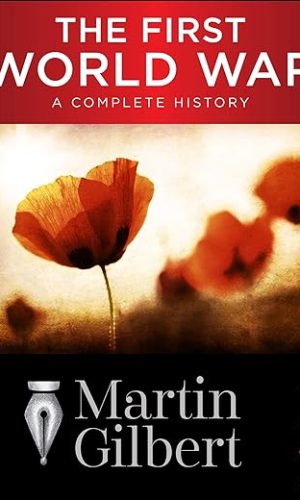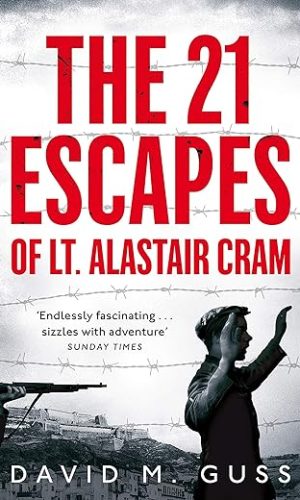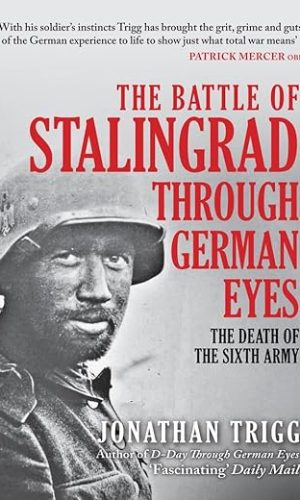Military History
-
American Civil War For Dummies, 2nd Edition
Take a walk through history with this guide for lifelong learnersThe American Civil War is one of the most fascinating and impactful periods in American history. Besides bringing about the end of slavery, the war had many important economic and social effects that continue to shape the history and present-day realities of the American people.
In American Civil War For Dummies, you’ll get an accessible, bird’s-eye view of one of history’s greatest conflicts. All the must-know details of the war are covered here, from the Battle of Gettysburg to the Emancipation Proclamation. You’ll also find:
- Descriptions of the experiences of Black Americans, in both the North and the South, during the war
- Explorations of how slavery and civil rights fit into the social, political, and economic context of the time
- Profiles of some of the most famous generals in the war, including Robert E. Lee and Ulysses S. Grant
Take a moment to get a hands-on education in this critical point in American history. Get American Civil War For Dummies now!
Read more
£13.70£17.10American Civil War For Dummies, 2nd Edition
£13.70£17.10 -
Allied Fighter Aircraft 1939–45: American, British, French, Soviet, Dutch, Polish (Identification Guide)
Allied Fighters 1939–45 offers an highly-illustrated guide to Allied fighter aircraft that fought in Europe during World War II. Featuring all the main models flown by the Allied air forces from 1939 to 1945, the book offers a wealth of detail, including unit markings, organization, numbers of aircraft flown by campaign and exhaustive specifications for each model. The book is arranged first by country and then chronologically by campaign so that every aspect of the air war in Europe is covered. The guide features fighters from throughout World War II, including early models, such as the Morane Saulnier MS.406C.1, Hawker Hurricane Mk I and Fokker D XXI, and the most advanced fighters of the period, such as the Lavochkin La-7, P-51K Mustang and Gloster Meteor Mk I.The book also covers aircraft that were used for air-to-air combat (Supermarine Spitfire), ground attack (P-47 Thunderbolt), bomber escort (P-51B Mustang), night defence (Bristol Beaufighter) and photographic reconnaissance (P-38 Lightning). Packed with more than 200 profiles and dozens of archive photographs of every major Allied fighter aircraft, Allied Fighters 1939–45 is a core reference volume for modellers and World War II aviation enthusiasts.Read more
£15.60£19.00 -
Faithful Through Hard Times: The uncensored story of WW2 Malta
“This is a moving story played out by every serving soldier when war dislocates families and taxes friendships.” Colonel (retired)Walter Bonnici, RAMC
Four years, 3 million bombs, one small island out-facing the might of the German and Italian air forces – and one young Scotsman who didn’t want to be there. The true story of WW2 Malta from an eye-witness account written at the time in a secret diary, a diary too dangerous to show anyone, and too precious to destroy.
Private George Taylor arrived on Malta in 1940 thinking that shiny buttons would earn him fast promotion; he left four years later, a cynical sergeant and a Master Freemason who never said, ‘I was there, ‘ without a bitter smile. Despite the times he said, ‘It’s me for the next boat’, despite his fears that Nettie had forgotten him, George kept the motto of the Royal Army Medical Corps ‘In arduis fidelis’, ‘faithful through hard times’ and only told his diary the inside story of four long years.
Now, the truth can be told.
‘Based on words and feelings recorded at the time it is probably unique.’ Don Marshall, Military History Enthusiast
www.jeangill.com
Read more
£2.90 -
The First World War: A New History
A brilliant and penetrating new history of the First World War by one of the world’s foremost experts on the conflict. Reissued with a new introduction from the author.Hew Strachan is one of the world’s foremost experts on the Great War of 1914-18. His on-going three-volume history of the conflict, the first of which was published in 2001, is likely to become the standard academic reference work: Max Hastings called it ‘one of the most impressive books of modern history in a generation’, while Richard Holmes hailed it as a ‘towering achievement’.
Now, Hew Strachan brings his immense knowledge to a one-volume work aimed squarely at the general reader. The inspiration behind the major Channel 4 series of the same name, to which Hew was chief consultant, THE FIRST WORLD WAR is a significant addition to the literature on this subject, taking as it does a uniquely global view of what is often misconceived as a prolonged skirmish on the Western Front. Exploring such theatres as the Balkans, Africa and the Ottoman Empire, Strachan assesses Britain’s participation in the light of what became a struggle for the defence of liberalism, and show how the war shaped the ‘short’ twentieth century that followed it.
Accessible, compelling and utterly convincing, this is modern history writing at its finest.
Read more
£7.30£10.40The First World War: A New History
£7.30£10.40 -
The Horrors Of The Vietnam War: Discover the Hidden Faces of Conflict and the Indelible Scars of War
The horrors of the Vietnam War: an unprecedented journey to the heart of a devastating conflictAre you passionate about history, eager to understand the events that shaped the world and their consequences? Then you’ve come to the right place! Discover “The Horrors of the Vietnam War”, a deep and shocking dive into one of the most controversial and deadly conflicts of the twentieth century. By reading this book, you will not only grasp the geopolitical stakes, but also understand the unimaginable suffering of the people, the atrocities committed and the lessons to be learned for the future.
A. Historical and geopolitical context: the origins of a multi-faceted conflict
From the very first pages, you will be immersed in the historical context of the Vietnam War. You will discover how French colonisation, the Indochina War and the Geneva Conference contributed to the emergence of this bloody conflict. In addition, you will explore the crucial role of the Cold War, the doctrine of containment and nationalist motivations in escalating tensions.B. The players in the conflict: the forces involved and their motivations
Who were the belligerents in this devastating war? You will learn all about the North Vietnamese and Vietcong forces, the South Vietnamese government, the United States and its allies, as well as the USSR and China. By understanding their motivations and objectives, you’ll be able to better grasp the reasons behind the horrors committed on the battlefield.C. Chronology of events: a war with many turning points
By following the chronology of major events step by step, you will experience the key moments of the Vietnam War, from the first American interventions to the fall of Saigon and the reunification of the country. You will witness the massive bombings, the use of chemical weapons and the atrocities committed against the civilian population.D. The human and environmental consequences: a nameless horror
The loss of human life, the destruction of property and the suffering of the people are at the heart of this book. You will discover the health and environmental after-effects of this war, in particular the impact of Agent Orange, deforestation and the loss of biodiversity. The poignant testimonies of survivors and refugees will touch your soul.E. The role of the media and public opinion: unprecedented awareness
How was the Vietnam War perceived by the whole world? You will explore the impact of the media and media coverage of the conflict, as well as the rise of opposition to the war, particularly through emblematic reports and photographs. You will understand how this awareness influenced public opinion and international demonstrations against the war.F. The lessons and legacy of the Vietnam War: a future not to be repeated
Finally, you will discover the strategic, tactical and political mistakes made during the war, as well as the political and diplomatic consequences. This book invites you to reflect on the lessons to be learned from these horrors to prevent future conflicts and the reconciliation and reconstruction efforts that followed the end of the war.Don’t miss this unique opportunity to discover “The horrors of the Vietnam War”!
By reading this book, you will be transported to the heart of one of the most significant wars in modern history, and you will come away transformed. Don’t miss this chance to immerse yourself in a captivating story, rich in detail and moving testimony. Buy “The Horrors of the Vietnam War” now and enjoy an unforgettable literary experience!Read more
£14.20 -
1971: A People’s History from Bangladesh, Pakistan and India
The year 1971 exists everywhere in Bangladesh-on its roads, in sculptures, in its museums and oral history projects, in its curriculum, in people’s homes and their stories, and in political discourse. It marks the birth of the nation, its liberation. More than 1000 miles away, in Pakistan too, 1971 marks a watershed moment, its memories sitting uncomfortably in public imagination. It is remembered as the ‘Fall of Dacca’, the dismemberment of Pakistan or the third Indo-Pak war. In India, 1971 represents something else-the story of humanitarian intervention, of triumph and valour that paved the way for India’s rise as a military power, the beginning of its journey to becoming a regional superpower.
Navigating the widely varied terrain that is 1971 across Pakistan, Bangladesh and India, Anam Zakaria sifts through three distinct state narratives, and studies the institutionalization of the memory of the year and its events. Through a personal journey, she juxtaposes state narratives with people’s history on the ground, bringing forth the nuanced experiences of those who lived through the war. Using intergenerational interviews, textbook analyses, visits to schools and travels to museums and sites commemorating 1971, Zakaria explores the ways in which the year is remembered and forgotten across countries, generations and communities.
Read more
£18.00£20.90 -
If You Survive (Ivy Books World War II/Nonfiction): From Normandy to the Battle of the Bulge to the End of World War II, One American Officer’s Riveting True Story
“If you survive your first day, I’ll promote you.”So promised George Wilson’s World War II commanding officer in the hedgerows of Normandy — and it was to be a promise dramatically fulfilled. From July, 1944, to the closing days of the war, from the first penetration of the Siegfried Line to the Nazis’ last desperate charge in the Battle of the Bulge, Wilson fought in the thickest of the action, helping take the small towns of northern France and Belgium building by building.
Of all the men and officers who started out in Company F of the 4th Infantry Division with him, Wilson was the only one who finished. In the end, he felt not like a conqueror or a victor, but an exhausted survivor, left with nothing but his life — and his emotions.
If You Survive
One of the great first-person accounts of the making of a combat veteran, in the last, most violent months of World War II.
Read more
£6.50£7.10 -
Japan at War in the Pacific: The Rise and Fall of the Japanese Empire in Asia: 1868-1945
“By the time of Japan’s surrender in 1945, an entire generation had grown up knowing nothing but conflict; but the transformation of Japan into a militarist power began decades earlier, with the toppling of the old samurai regime, and the rush of the formerly isolated nation onto the world stage.”Japan at War in the Pacific recounts the dramatic story of Japan’s transformation from a Samurai-led feudal society to a modern military-industrial empire in the space of a few decades―and the many wars it fought along the way. These culminated in an attempt by Japan’s military leaders to create an Asia-Pacific empire which at its greatest extent rivaled the British Empire in scope and power.
The battle for supremacy in the Pacific brought the Japanese to great heights but led ultimately to the nation’s utter devastation at the end of World War II, culminating with the dropping of atomic bombs on Hiroshima and Nagasaki―the only time such weapons have been used in warfare.
In this book, author Jonathan Clements offers fascinating insights into:
- The wars that Japan fought during its rise to supremacy in the western Pacific, including the Russo-Japanese War, the seizure of Manchuria and war in China, and the Pacific theater of World War II.
- The many military actions undertaken by Imperial Japanese forces including the horrific “Rape of Nanjing,” the surprise attack on Pearl Harbor, the decisive defeat at the Battle of Midway, the savage Battles of Okinawa and Iwo Jima, and many more.
- The motivations and beliefs of Japan’s leaders, as well as the policy decisions of a government dedicated to expansion which ultimately led to a complete dismantling of the nation’s political and social order during the Allied Occupation.
- With over 75 photographs and maps, this book vividly recounts the amazing story of Japan’s military conquests. Clements charts the evolution of the Japanese empire in the Pacific and the influence of a ruthless military-led government on everything from culture and food to fashion and education―including the anthems and rallying calls of a martial nation which were silenced long ago but continue to echo in Asian politics.
Read more
£13.70£17.10 -
The Tommy of the First World War
‘Tommy Atkins’ has been the nickname given to soldiers of the British Army since the eighteenth century. The origin of the name is shrouded in mystery, but it has stuck. By 1914, the Tommy had changed dramatically since the days of Queen Victoria’s redcoats. Edwardian army reforms had improved recruitment and training and had re-organised the regular forces and reserves.When the First World War broke out, the system went smoothly into action and the BEF was carried across the Channel to France. But the British Army was relatively small and the First World War required a rapid expansion of the ranks. Lord Kitchener’s call for men raised the so-called New Army, half a million strong, but more were needed and conscription came into force. Many of those who volunteered together were also trained together and fought side by side in battle. In the fire of machine guns and amid the shell-fire, large numbers of men from city parishes, towns and villages fell together. Neil Storey takes us through the recruitment, equipment, training and experiences of these soldiers in the First World War: the Tommies, ‘the poor bloody infantry’.
This book is part of the Britain’s Heritage series, which provides definitive introductions to the riches of Britain’s past, and is the perfect way to get acquainted with the Tommy of the First World War.
Read more
£5.10 -
Frontline: A Soldier’s Story (War in Afghanistan)
Frontline, is the story of a single soldier out of the many thousands of soldiers fresh out of school or college who joined the British Army and found themselves within a few months of completing basic training. Being deployed to Afghanistan fighting for their lives. These modern-day heroes risked their lives on a daily basis to help bring peace to a troubled country.Imagine being 18 and sent to a foreign country with 40-degree heat, an environment that is dusty and areas that are quite inhospitable with a primeval beauty. Every step on a dusty track could be your last as your eyes strain to catch a glimpse of an IED before it is too late, just before the rounds start impacting in the dirt all around you.
Read more
£5.20 -
The German Occupation of Jersey: Agriculture and Survival in a Time of War
On 1 July 1940 the Germans occupied Jersey and remained until the end of the war in Europe in May 1945. On Jersey, agriculture was the only economic activity left after the Germans arrived on the Island. It became the basis of Island life and, as the war wore on, the isolated Jersey became increasingly dependent on agriculture for its survival, particularly during near starvation in the winter of 1944. In this book local historian Andrew Gilson examines the relationship between the German Military Government and the civilian government and civil service on Jersey, and how they had to work together to ensure the Island’s survival through its farming industry. Based on hundreds of original documents from Jersey, including those held by the Royal Jersey Agricultural & Horticultural Society, other Channel Islands, Germany, France, Austria and elsewhere in Europe, the author reveals the complex relationship between the German occupiers, civilian authorities and the farming community. Accusations of collaboration and stories of sabotage, German exports of produce, the development of tobacco as a cash economy, the exploitation of Jersey cattle by Nazi scientists to create a new ‘superbreed’, German requisition of foodstuffs and the black market all played their part in this fascinating story. This groundbreaking and original study of the German occupation of Jersey will be of interest to all those wishing to know more about the history of Jersey as well as to military historians.Read more
£23.70£28.50 -
Cold War: For Forty-five Years the World Held its Breath
Cold War is the story of the half-century since the end of the Second World War – the story of our lives. Its framework is the confrontation, military and ideological, between two great powers that dominated the world during these years. It is a story of crises and conflict on a global scale: from the Berlin Blockade and the Cuban Missile Crisis, to the tanks in the streets of Warsaw, Budapest and Prague, to spies, student riots and encounters in space.
In Cold War, Jeremy Isaacs and Taylor Downing record epic history through the detail of individual human experience: the recollections not only of statesmen whose decisions led to these momentous events, but also of the ordinary men and women whose lives were bound up in these years of conflict. Cold War is the first comprehensive history for the general reader to benefit from the recent opening of Soviet, East European and Chinese archives as well as formerly classified American documents. In a driving narrative that it both gripping and informative, the true story of the Cold War can at last be told.Read more
£12.90£14.20 -
Voices of The Battle of Britain 80th Anniversary 1940 – 2020
It was a crucial moment of WW2. 1940. The Royal Air Force, virtually alone, defended the skies of Britain against massed formations of German bombers. They put up such a ferocious defence that Hitler gave up ideas of invading Britain and turned his attention to an assault on the Soviet Union. Of those pilots who courageously flew their Spitfires and Hurricanes against the Luftwaffe barely a handful remain. However the authors have interviewed no less than eighteen survivors and it is their memories and anecdotes that make this book unique. Highly illustrated throughout with rarely seen images, Voices of The Battle of Britain is packed with great stories of aerial combat and being shot down, of the classic fighters that they flew and fought in and against, of making and losing friends and colleagues; of a strained social life in the midst of battle; and, most of all, of standing steadfast in the face of overwhelming odds. It is coupled with an authoritative and lively narrative.Read more
£8.80£19.00 -
Warplanes of World War II: Fighters, Bombers, Ground Attack Aircraft
Warplanes of World War II provides a detailed look at 50 key aircraft in service between 1939 and 1945. Warplanes profiled include fighters, bombers, fighter- bombers, ground attack and other aircraft from the US, USSR, Germany, UK, Japan, France, Poland and Italy. A large-format side-on photograph in full colour shows every detail of each aircraft, with notes pointing out features that made it unique. This is followed by an in-depth description of the aircraft’s development, manufacturing history and technical profile – all accompanied by colour photographs and a detailed specification panel.
Read more
£15.60£19.00 -
The Vietnam War: 1956–75 (Essential Histories)
In this fully illustrated introduction, leading Vietnam War historian Dr Andrew Wiest provides a concise overview of America’s most divisive war.America entered the Vietnam War certain of its Cold War doctrines and convinced of its moral mission to save the world from the advance of communism. However, the war was not at all what the United States expected. Dr Andrew Wiest examines how, outnumbered and outgunned, the North Vietnamese and Viet Cong forces resorted to a guerrilla war based on the theories of Mao Zedong of China, while the US responded with firepower and overwhelming force. Drawing on the latest research for this new edition, Wiest examines the brutal and prolonged resultant conflict, and how its consequences would change America forever, leaving the country battered and unsure as it sought to face the challenges of the final acts of the Cold War. As for Vietnam, the conflict would continue long after the US had exited its military adventure in Southeast Asia.
Updated and revised, with full-colour maps and new images throughout, this is an accessible introduction to the most important event of the “American Century.”
Read more
£6.40 -
The Frontier Sea: The Napoleonic Wars in the Adriatic
Most of the great powers contested the lands around the Adriatic Sea during the Napoleonic wars. While never a major theatre of operations, it was part of the overall strategy of most of the combatants. It had an essential role in the conflict, influencing alliances and diverting troops and ships, which all contributed to the defeat of Napoleon. It was also a period of significant change, with the French and British intervening in a region that had long been a battleground reserved for the Austrian, Russian and Ottoman empires.This book examines the campaigns, armies, navies and personalities that fought in the region between 1797 and 1815. Campaigns rarely mentioned in the history of the period. Austrian, French, Russian, British, and their foreign regiments fought up and down the coast, sometimes with or against local leaders like Peter I of Montenegro and Ali Pasha of Ioannina. Many commanders were far from home, with orders taking weeks to reach them. This meant even junior officers could take military and diplomatic decisions usually reserved for more senior officers.
This is a story of strategy and small wars with many colourful personalities playing their part in a fascinating, if violent, tale against the backdrop of the frontier sea.
Read more
£8.50£9.40 -
World War Two: 500 Interesting Facts About Major Events, Battles, and People (Curious Histories Collection)
Uncover the fascinating history of World War Two with 500 interesting facts!From the invasion of Poland to V-J Day, this book is your definitive guide to understanding this historical event. Gain insight into pivotal battles, such as Pearl Harbor, Midway, and Stalingrad. Learn about the weapons and technologies used in the battles and discover how women played a significant role during wartime. Unearth meaningful resistance movements and explore the legacies of WWII.
You are in for an exciting ride, so buckle in!
Delve deep into history with chapters including:
- The outbreak of WWII
- Battle of Britain
- Attack on Pearl Harbor
- Battle of Stalingrad
- Japanese American Internment
- And so much more!
This book is a must-have for anyone looking to gain an in-depth understanding of one of history’s most defining moments. Get your copy today, and explore 500 interesting facts about World War Two!
Read more
£8.90 -
Britain’s War: A New World, 1942-1947
WINNER OF THE TEMPLER MEDAL BOOK PRIZE 2020
A SPECTATOR, FINANCIAL TIMES AND DAILY TELEGRAPH BOOK OF THE YEAR 2020
‘A stunning achievement’ Max Hastings, Sunday Times
Part Two of Daniel Todman’s epic history of the Second World War opens with one of the greatest disasters in British military history – the fall of Singapore in February 1942. Unlike the aftermath of Dunkirk, there was no redeeming narrative available here – Britain had been defeated by a far smaller Japanese force in her grandly proclaimed, invincible Asian ‘fortress’.
The unique skill of Daniel Todman’s history lies in its never losing sight of the inter-connectedness of the British experience. The agony of Singapore, for example, is seen through the eyes of its inhabitants, of its defenders, of Churchill’s Cabinet and of ordinary people at home. Each stage of the war, from the nadir of early 1942 to the great series of victories in 1944-5 and on to Indian independence, is described both as it was understood at the time and in the light of the very latest historical research.
Britain’s War is a triumph of narrative, empathy and research, as gripping in its handling of individual witnesses to the war – those doomed to struggle with bombing, rationing, exhausting work and above all the absence of millions of family members – as of the gigantic military, social, technological and economic forces that swept the conflict along. It is the definitive account of a drama which reshaped our country.
‘I cannot recommend this history highly enough’ Keith Lowe, Literary Review
Read more
£13.60£16.10Britain’s War: A New World, 1942-1947
£13.60£16.10 -
D-Day Through German Eyes: How the Wehrmacht Lost France
Everyone is familiar with the story of D-Day and the triumphal liberation of France by the Allies: a barbaric enemy was defeated by Allied ingenuity, courage and overwhelming military force, helped by dreadful German command errors and the terrible state of Wehrmacht forces in the West – but is this all true? The Wehrmacht was hugely experienced, equipped with some of the best weaponry of the war and was holding its own in Italy and Russia at the time. Berlin knew the invasion was coming and had had years to prepare for it. So how did the Germans view the impending invasion and campaign, did they feel ready, what forces did they have and could they have done better? Previous histories have focused on the ‘clash of the generals’; the battle between von Runstedt and Eisenhower, Montgomery and Rommel, but on the German side in particular this was a battle that would be fought by divisional and regimental commanders; the ‘German D-Day colonels’ upon whom the real business of trying to defeat the invasion fell – it was they and their men, outnumbered and outgunned, who somehow held Normandy for ten whole weeks against the greatest seaborne invasion force ever assembled, and occasionally even came close to defeating it. In the end they lost, and the majority of these unsung leaders ended up killed, wounded or captured in the fighting. As for their men, they ranged from élite Waffen-SS stormtroopers through to bewildered teenagers, old men, ‘recycled’ invalids and even anti-communist Eastern legions. Written from the ‘other side’ and told through the words of the veterans, this book is a revelation.Read more
£8.70£9.50 -
The Mammoth Book of the Vietnam War (Mammoth Books)
By 1969, following the French defeat at Dien Bien Phu, over 500,000 US troops were ‘in country’ in Vietnam. Before America’s longest war had ended with the fall of Saigon in 1975, 450,000 Vietnamese had died, along with 36,000 Americans. The Vietnam War was the first rock ‘n’ roll war, the first helicopter war with its doctrine of ‘airmobility’, and the first television war; it made napalm and the defoliant Agent Orange infamous, and gave us the New Journalism of Michael Herr and others. It also saw the establishment of the Navy SEALs and Delta Force. At home, America fractured, with the peace movement protesting against the war; at Kent State University, Ohio National Guardsmen fired on unarmed students, killing four and injuring nine.
Lewis’s compelling selection of the best writing to come out of a war covered by some truly outstanding writers, both journalists and combatants, includes an eyewitness account of the first major battle between the US Army and the People’s Army of Vietnam at Ia Drang; a selection of letters home; Nicholas Tomalin’s famous ‘The General Goes Zapping Charlie Cong’; Robert Mason’s ‘R&R’, Studs Terkel’s account of the police breaking up an anti-war protest; John Kifner on the shootings at Kent State; Ron Kovic’s ‘Born on the Fourth of July’; John T. Wheeler’s ‘Khe Sanh: Live in the V Ring’; Pulitzer Prize-winner Seymour Hersh on the massacre at My Lai; Michael Herr’s ‘It Made You Feel Omni’; Viet Cong Truong Nhu Tang’s memoir; naval nurse Maureen Walsh’s memoir, ‘Burning Flesh’; John Pilger on the fall of Saigon; and Tim O’Brien’s ‘If I Die in a Combat Zone’.
Read more
£11.40£12.30The Mammoth Book of the Vietnam War (Mammoth Books)
£11.40£12.30 -
The Korean War: A History: 33 (Modern Library Chronicles)
A BRACING ACCOUNT OF A WAR THAT IS EITHER MISUNDERSTOOD, FORGOTTEN, OR WILLFULLY IGNORED
For Americans, it was a discrete conflict lasting from 1950 to 1953. But for the Asian world the Korean War was a generations-long struggle that still haunts contemporary events. With access to new evidence and secret materials from both here and abroad, including an archive of captured North Korean documents, Bruce Cumings reveals the war as it was actually fought. He describes its origin as a civil war, preordained long before the first shots were fired in June 1950 by lingering fury over Japan’s occupation of Korea from 1910 to 1945. Cumings then shares the neglected history of America’s post-World War II occupation of Korea, reveals untold stories of bloody insurgencies and rebellions, and tells of the United States officially entering the action on the side of the South, exposing as never before the appalling massacres and atrocities committed on all sides.
Elegantly written and blisteringly honest, The Korean War is, like the war it illuminates, brief, devastating, and essential.
Read more
£11.60£12.10 -
The Lost Paratroopers of Normandy: A Story of Resistance, Courage, and Solidarity in a French Village
The fateful days and weeks surrounding 6 June 1944 have been extensively documented in histories of the Second World War, but less attention has been paid to the tremendous impact of these events on the populations nearby. The Lost Paratroopers of Normandy tells the inspiring yet heartbreaking story of ordinary people who did extraordinary things in defense of liberty and freedom. On D-Day, when transport planes dropped paratroopers from the 82nd and 101st Airborne Divisions hopelessly off-target into marshy waters in northwestern France, the 900 villagers of Graignes welcomed them with open arms. These villagers – predominantly women – provided food, gathered intelligence, and navigated the floods to retrieve the paratroopers’ equipment at great risk to themselves. When the attack by German forces on 11 June forced the overwhelmed paratroopers to withdraw, many made it to safety thanks to the help and resistance of the villagers. In this moving book, historian Stephen G. Rabe, son of one of the paratroopers, meticulously documents the forgotten lives of those who participated in this integral part of D-Day history.Read more
£14.30£19.00 -
The Rifle: Combat Stories from America’s Last WWII Veterans, Told Through an M1 Garand
It all started because of a rifle.The Rifle is an inspirational story and hero’s journey of a 28-year-old U.S. Marine, Andrew Biggio, who returned home from combat in Afghanistan and Iraq, full of questions about the price of war. He found answers from those who survived the costliest war of all — WWII veterans.
It began when Biggio bought a 1945 M1 Garand Rifle, the most common rifle used in WWII, to honor his great uncle, a U.S. Army soldier who died on the hills of the Italian countryside. When Biggio showed the gun to his neighbor, WWII veteran Corporal Joseph Drago, it unlocked memories Drago had kept unspoken for 50 years. On the spur of the moment, Biggio asked Drago to sign the rifle. Thus began this Marine’s mission to find as many WWII veterans as he could, get their signatures on the rifle, and document their stories.
For two years, Biggio traveled across the country to interview America’s last-living WWII veterans. Each time he put the M1 Garand Rifle in their hands, their eyes lit up with memories triggered by holding the weapon that had been with them every step of the war. With each visit and every story told to Biggio, the veterans signed their names to the rifle. 96 signatures now cover that rifle, each a reminder of the price of war and the courage of our soldiers.
Read more
£12.20£14.20 -
The Korean War: An Epic Conflict 1950-1953
The Korean War is journalist and military historian Sir Max Hastings’ compelling account of the forgotten war.
‘The best narrative history of the Korean conflict’ – Guardian
On 25 June 1950 the invasion of South Korea by the Communist North launched one of the bloodiest conflicts of the last century. The seemingly limitless power of the Chinese-backed North was thrown against the ferocious firepower of the UN-backed South in a war that can be seen today as the stark prelude to Vietnam.
Max Hastings draws on first-hand accounts of those who fought on both sides to produce this vivid and incisive reassessment of the Korean War, bringing the military and human dimensions into sharp focus. Critically acclaimed on publication, republished with an introduction from the author, The Korean War remains the best narrative history of this conflict.
‘A brilliant tour-de-force’ – Times Literary Supplement
‘Excellent, readable history by a master of the genre’ – Daily Mail
‘This book establishes him as one of the leading British military historians.’ – New York Times
Read more
£12.30£16.10The Korean War: An Epic Conflict 1950-1953
£12.30£16.10 -
Spitfire Manual 1940
How to fly the legendary fighter plane in combat using the manuals and instructions supplied by the RAF during the Second World War. An amazing array of leaflets, books and manuals were issued by the War Office during the Second World War to aid pilots in flying the Supermarine Spitfire, here for the first time and using the original 1940s setting, they are collated into a single book. An introduction is supplied by expert aviation historian Dilip Sarkar. Other sections include aircraft recognition, how to act as an RAF officer, bailing out etc.Read more
£6.60£9.50Spitfire Manual 1940
£6.60£9.50 -
World War II from Above: A History in Maps and Satellite Photographs
World War II from Above offers a never-before-seen combination of annotated satellite images and expertly drawn battle maps. It aims to satisfy both the military history buff and those seeking a visually stunning history gift book, bringing the war vividly and dramatically to life by showing the actual landscapes where battles took place along with specially commissioned annotations depicting remarkable events, troop movements, heroic last stands, or even where individual soldiers stood or fell.
Each of the 25 chapters features an enhanced Google Earth image, along with specially commissioned battle maps showing every facet of the conflict in exceptional detail.
Here you will find all the key milestones of World War II: the invasion of France, Germany’s first blitzkrieg offensives, the Battle of Alamein, Monte Cassino, Arnhem, the invasion of Sicily, the Battle of the Bulge, Iwo Jima, D-Day and the final push to Berlin, along with a host of other strategic and battle maps from every geographical location.
Written by a highly decorated soldier and leading military history expert, this is an innovative, richly detailed and visually stunning overview of history’s most destructive conflict.
Read more
£16.50£19.00 -
A History of War Surgery
Since antiquity, war surgery has been a profession demanding a special kind of human: one able to face seemingly insurmountable problems; one able to keep a lucid mind and steady hands in extraordinary circumstances; one able to shoulder tremendous burdens; and one able to harden himself or herself, time and again, to failure and self-doubt. It is, and always has been, a harrowing business, and only for the brave. Dr John Wright charts the evolution of war surgery from ancient times to the present day, investigating its breakthroughs, its pitfalls, and the people and conflicts that have shaped it. But above all, this is a personal history, calling on the first-hand accounts of the surgeons, soldiers, medics, nurses, stretcher-bearers, and many others who have served in battle and come face-to-face with its most appalling horrors. This is not a book for the faint-hearted. It is one that searches for and delivers the truth about those who, with unerring skill, courage and determination, endeavour to undo the terrible damage we habitually inflict upon ourselves.Read more
£7.30A History of War Surgery
£7.30 -
The World War II Collection
A wonderful gift for any military history enthusiast.
This collection not only covers notable battles but also life under the Nazi regime and the trials that bought the regime’s figureheads to justice.
This handsome box set brings together five titles which recount the major events of World War II, from Dunkirk to the Nuremberg trials. With breakdowns of skillful military manoeuvres, chilling accounts of Nazi organizations and astounding details from the fall of Berlin, this collection chronicles the defeat of Germany and the Axis powers.
These titles are:
• Great Battles of World War II by Michael Dudley
• The D-Day Landings by Nigel Cawthorne
• Hitler’s Last Day by Richard Dargie
• The Story of the SS by Al Cimino
• The Nuremberg Trials by Alexander MacdonaldA great read for both military history enthusiasts and those eager to learn more about World War II.
Read more
£18.00The World War II Collection
£18.00 -
The Oxford History of the First World War
bHistories you can trust./bThe First World War, now a century ago, still shapes the world in which we live, and its legacy lives on, in poetry, in prose, in collective memory and political culture. By the time the war ended in 1918, millions lay dead. Three major empires lay shattered by defeat, those of Germany, Austria-Hungary, and the Ottomans. A fourth, Russia, was in the throes of a revolution that helped define the rest of the twentieth century.
The Oxford History of the First World War brings together in one volume many of the most distinguished historians of the conflict, in an account that matches the scale of the events. From its causes to its consequences, from the Western Front to the Eastern, from the strategy of the politicians to the tactics of the generals, they chart the course of the war and assess its profound political and human consequences. Chapters on economic mobilization, the impact on women, the role of propaganda, and the rise of socialism establish the wider context of the fighting at sea and in the air, and which ranged on land from the trenches of Flanders to the mountains of the Balkans and the deserts of the Middle East.
Read more
£11.20£12.30The Oxford History of the First World War
£11.20£12.30 -
The Military History of World War II
Traces the origins and course of World War II across the globe, from the invasion of Poland to the destruction of Hiroshima. The book includes numerous contemporary photographs, as well as features and maps on particular aspects of the conflict and the military hardware used by both sides.Read more
£0.40 -
St Helens Pals War Diary
The Great War Diary of the St Helens Pals, the 11th Battalion South Lancashire Regiment, following their journey through France and Flanders from 1914 to 1918.Read more
£7.60St Helens Pals War Diary
£7.60 -
The Battle of the Beams: The secret science of radar that turned the tide of the Second World War
‘Deeply researched and engagingly written’ The Times
‘Has the pace and style of a well-crafted thriller’ Mail on Sunday
‘Chock full of memorable characters and written with all the drama and pace of a Robert Harris thriller’ Rowland White, author of Harrier 809The radio war of 1939-45 is one of the great scientific battles in history.
This is the story of that war.Relying on first-hand accounts as well as papers recently released by the Admiralty, The Battle of the Beams fills a huge missing piece in the canon of WW2 literature.
It combines history, science, derring do and dogged determination and will appeal as much to fans of WW2 history as to those fascinated by the science behind the beams that changed our lives.
The British believed that, through ingenuity and scientific prowess, they alone have a war-winning weapon: radar. They are wrong. The Germans have it too.
They believe that their unique maritime history means their pilots have no need of navigational aids. Flying above the clouds they, like the seafarers of old, had the stars to guide them, and that is all that is required. They are wrong. Most of the bombs the RAF will drop in the first years of the war land miles from their target.
They also believe that the Germans, without the same naval tradition, will never be able to find targets at night. They are, again, wrong. In 1939 the Germans don’t just have radar to spot planes entering their airspace, they have radio beams to guide their own planes into enemy airspace.
Luckily there was one young engineer, Reginald Jones, helping the British government with their own scientific developments. In June 1940, when Jones quietly explained the beams the Germans had devised to a room full of disbelieving sceptics, Churchill later described the moment as like sitting in the parlour while Sherlock Holmes finally reveals the killer. Churchill immediately supported Jones’s efforts to develop radar technology that went on to help the Allies win the war.
Read more
£15.20£19.00 -
Short History of War
A wonderfully engaging, accessible introduction to war, from ancient times to the present and into the futureThroughout history, warfare has transformed social, political, cultural, and religious aspects of our lives. We tell tales of wars—past, present, and future—to create and reinforce a common purpose.
In this engaging overview, Jeremy Black examines war as a global phenomenon, looking at the First and Second World Wars as well as those ranging from Han China and Assyria, Imperial Rome, and Napoleonic France to Vietnam and Afghanistan. Black explores too the significance of warfare more broadly and the ways in which cultural understandings of conflict have lasting consequences in societies across the world. Weaponry, Black argues, has had a fundamental impact on modes of war: it created war in the air and transformed it at sea. Today, as twentieth-century weapons are challenged by drones and robotics, Black examines what the future of warfare looks like.Read more
£7.60£14.20Short History of War
£7.60£14.20 -
November 1942: An Intimate History of the Turning Point of the Second World War
**A Telegraph Best History Book of 2023**
‘An astonishing achievement’ ANTONY BEEVOR
‘Extraordinary’ JULIA BOYDAn intimate history of the most important month of the Second World War – perhaps the century – as experienced by those who lived through it, completely based on their diaries, letters and memoirs.
At the beginning of November 1942, it looked as if the Axis powers could win the war; at the end of that month, it was obviously just a matter of time before they would lose.
In between came el-Alamein, Guadalcanal, the French North Africa landings, the Japanese retreat in New Guinea, and the Soviet encirclement of the German 6th Army at Stalingrad. In this innovatively kaleidoscopic and riveting historical marvel, Peter Englund reduces these epoch-making events to their basic component: the individual experience.
In thirty memorable days we meet characters including a Soviet infantryman at Stalingrad; an Italian truck driver in the North African desert; a partisan in the Belarussian forests; a machine gunner in a British bomber; a twelve-year-old girl in Shanghai; a university student in Paris; a housewife on Long Island; a prisoner in Treblinka; Albert Camus, Vasily Grossman, and Vera Brittain – forty characters in all. We also witness the launch of SS James Oglethorpe; the fate of U-604, a German submarine; the building of the first nuclear reactor; and the making of Casablanca.
Not since Englund’s own The Beauty and the Sorrow has a book given us one of the most dramatic periods of human history in all its immensity and emotional range.
‘Thought-provoking’ SUNDAY TIMES
‘Thoroughly worth reading’ TELEGRAPHRead more
£19.80£23.80 -
Born For War: One SAS Trooper’s Extraordinary Account of the Falklands
‘A no holdout account of the Falklands War from a man who was in the fight.’ Andy McNab
Tony Hoare always knew he wanted to be in the SAS and so, after working his way through the ranks, he passed arduous SAS selection in 1978.
Less than four years later, Tony and his team were sent to the Falklands, just off the coast of Argentina, where tensions were rising and war was on the horizon. Nothing could have prepared him for what happened over the course of the next 12 weeks, as the Falkland Islands became a battleground between the British and Argentinians. As helicopters crashed and ships sank, Tony battled across treacherous terrain to help reclaim the islands from a fearsome enemy.
This is a thrilling account of the Falklands from a trooper who saw it all.
Read more
£8.70£9.50 -
The First World War: A Complete History
“A stunning achievement of research and storytelling” that weaves together the major fronts of WWI into a single, sweeping narrative (Publishers Weekly, starred review).
It was to be the war to end all wars, and it began at 11:15 on the morning of June 28, 1914, in an outpost of the Austro-Hungarian Empire called Sarajevo. It would officially end nearly five years later. Unofficially, however, it has never ended: Many of the horrors we live with today are rooted in the First World War.
The Great War left millions of civilians and soldiers maimed or dead. It also saw the creation of new technologies of destruction: tanks, planes, and submarines; machine guns and field artillery; poison gas and chemical warfare. It introduced U-boat packs and strategic bombing, unrestricted war on civilians and mistreatment of prisoners. But the war changed our world in far more fundamental ways than these.
In its wake, empires toppled, monarchies fell, and whole populations lost their national identities. As political systems and geographic boundaries were realigned, the social order shifted seismically. Manners and cultural norms; literature and the arts; education and class distinctions; all underwent a vast sea change.
As historian Martin Gilbert demonstrates in this “majestic opus” of historical synthesis, the twentieth century can be said to have been born on that fateful morning in June of 1914 (Publishers Weekly, starred review).
“One of the first books that anyone should read . . . to try to understand this war and this century.” —The New York Times Book Review
Read more
£13.30 -
Hitler’s Soldiers: The German Army in the Third Reich
A penetrating study of the German army’s military campaigns, relations with the Nazi regime, and complicity in Nazi crimes across occupied EuropeFor decades after 1945, it was generally believed that the German army, professional and morally decent, had largely stood apart from the SS, Gestapo, and other corps of the Nazi machine. Ben Shepherd draws on a wealth of primary sources and recent scholarship to convey a much darker, more complex picture. For the first time, the German army is examined throughout the Second World War, across all combat theaters and occupied regions, and from multiple perspectives: its battle performance, social composition, relationship with the Nazi state, and involvement in war crimes and military occupation.
This was a true people’s army, drawn from across German society and reflecting that society as it existed under the Nazis. Without the army and its conquests abroad, Shepherd explains, the Nazi regime could not have perpetrated its crimes against Jews, prisoners of war, and civilians in occupied countries. The author examines how the army was complicit in these crimes and why some soldiers, units, and higher commands were more complicit than others. Shepherd also reveals the reasons for the army’s early battlefield successes and its mounting defeats up to 1945, the latter due not only to Allied superiority and Hitler’s mismanagement as commander-in-chief, but also to the failings―moral, political, economic, strategic, and operational―of the army’s own leadership.Read more
£12.30 -
Forgotten War: The British Empire and Commonwealth’s Epic Struggle Against Imperial Japan, 1941–1945
The monumental struggle fought against Imperial Japan in the Asia/Pacific theater during World War II is primarily viewed as an American affair. While the United States did play a dominant role, the British and Commonwealth forces also made major contributions – on land, at sea and in the air – eventually involving over a million men and vast armadas of ships and aircraft. It was a difficult and often desperate conflict fought against a skilled and ruthless enemy that initially saw the British suffer the worst series of defeats ever to befall their armed forces. Still, the British persevered and slowly turned the tables on their Japanese antagonists. Fighting over an immense area that stretched from India in the west to the Solomon Islands in the east and Australia in the south to the waters off Japan in the north, British and Commonwealth forces eventually scored a string of stirring victories that avenged their earlier defeats and helped facilitate the demise of the Japanese Empire.Often overlooked by history, this substantial war effort is fully explored in Forgotten War. Meticulously researched, the book provides a complete, balanced and detailed account of the role that British and Commonwealth forces played on land, sea and in the air during this crucial struggle. It also provides unique analysis regarding the effectiveness and relevance of this collective effort and the contributions it made to the overall Allied victory.
Read more
£20.10£23.80 -
The 21 Escapes of Lt Alastair Cram: A Compelling Story of Courage and Endurance in the Second World War
A genuinely new Second World War story, The 21 Escapes of Lt Alastair Cram by David M. Guss is a riveting account of the wartime exploits of the Scotsman. It is a tale of courage in the face of extraordinary odds and a testament to one man’s dogged determination never to give up.
‘The greatest serial escaper of the Second World War’ – The Times
‘Endlessly fascinating. Cram’s story sizzles with adventure’ – Giles Milton, Sunday Times
In November 1941 Lt Alastair Cram was taken prisoner in North Africa as a devastating tank battle unfolded as Operation Crusader struggled to relieve Tobruk. His capture began a four year-long odyssey as he passed through twelve different POW camps, three Gestapo prisons and one asylum. Determined to regain his freedom, he became a serial escapee fleeing his captors no fewer than twenty-one times.
The most dramatic of these attempts was from Gavi, the ‘Italian Colditz’. This maximum-security prison built inside a thousand year old stone fortress was for the pericolosi, those classified as the ‘most dangerous’ prisoners due to their unrelenting desire to escape. It was here that Alastair met David Stirling, the legendary founder of the SAS, and cooked up the plan for the ‘Cistern Tunnel’, one of the most audacious but little-known mass escape attempts of the entire war.
______________‘Fascinating’ – Daily Express
‘An enthralling portrait of true courage’ Sunday Express S Magazine
Read more
£8.70£9.50 -
The Battle of Stalingrad Through German Eyes: The Death of the Sixth Army
Five months, one week and three days of hell. The German offensive to capture Stalingrad began in August 1942, using Friedrich Paulus’s 6th Army and elements of the 4th Panzer Army. The attack was supported by intense bombing that reduced much of the city to rubble. The battle degenerated into house-to-house fighting, as both sides fought for the city on the Volga. By mid-November, the Germans were on the brink of victory as the Soviet defenders clung on to a final few slivers of land along the west bank of the river. Then, on 19 November, the Red Army launched Operation Uranus, targeting the weaker Romanian armies protecting the 6th Army’s flanks. The ill-equipped Romanians were overrun and the 6th Army was cut off and surrounded. Hitler was determined to hold the city – the symbolic namesake of the Soviet leader – and forbade the 6th Army from attempting a breakout, insisting they be supplied by air instead; in February 1943, without food or ammunition, some 91,000 starving, lice-ridden Germans surrendered. The losses on both sides were eye-watering – the Soviets alone suffered something approaching half a million dead and more than 650,000 sick or wounded – and in his unique style author Jonathan Trigg reveals the human agony behind such statistics through the words of the Germans who were there. Was it all over after the surrender? Of course not. Death marches did for many: Landser Josef Farber remembered: ‘We set out with 1,200 men … about 120 were alive when we reached the camp.’ This was war at its rawest – this was Stalingrad.Read more
£16.70£19.00


